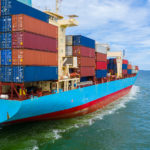Supply chains are subjected to a wide range of potential disruptions and risks every year, according to Aaron Michel, senior engineer with AIR Worldwide. He discussed the risks expected to affect supply chains this year during a podcast with Claims Journal.
“While forecasting any particular event is nearly impossible, we do look at the events from the past years to think about what risks might be in the future,” said Michel.
Though the three categories of global risks remain the same, the frequency and severity of risks experienced year to year varies, Michel said. In order to avert supply chain disruption, he explained why businesses need to be proactive in identifying and managing risks.
The three categories of risk are:
- Natural – Extreme or catastrophic weather, causes the most damage.
- Manmade – Lower severity, affects brand reputation and customer loyalty. An example is the Samsung Note battery recall.
- Economic – Induces product or labor shortage. Two examples include loss of a patent and the Hanjin Shipping Company, which filed for bankruptcy leaving ships and product stranded all over the world.
Michel explained that risks don’t necessarily show a big difference year to year.
“What can change year to year is the frequency and impact severity associated with each risk,” explained Michel. “This is less related to the events themselves and maybe more related to how people are dealing with them.”
Corporations are getting better at dealing with supply chain disruptions, he said.
“Corporations now leverage a lot of their own data assets and tools that are being brought to the market to build smarter and more resilient supply chains, which really helps them mitigate disruptive events,” Michel said. “This could come in the form of…an impending storm…and rerouting a shipment. It could be rapidly shifting supply from a damaged facility to an undamaged one or just proactively identifying high risk facilities and increasing safety stock at those.”
As a result, companies are becoming more resilient as they build better networks, he said.
Reliance on the technology used to help businesses become better at managing supply chain disruptions could also lead to problems in the future.
“As technology is improving and interconnectivity is increasing, we’re moving towards reliance on just in time product or production processes. That has some negative outcomes that might emerge in the coming years,” Michel said.
For example, cyber attacks are expected to increase in both frequency and severity, he said.
“Another big risk is in the interconnectivity and correlation in those networks themselves and our lack of understanding. It’s extremely common for us to hear of a large-scale supply chain disruption that came from production stoppage at a previously unknown higher tier supplier,” Michel said. “There’s a good example from Tohoku [Japan] of a paint pigment manufacturer that actually supplied paint pigments to most of the global auto producers. A disruption of that facility actually caused four and a half million cars to not be produced in 2011 following that event.”
Global risks impact supply chain disruption by disrupting the production of goods or services. The result is that businesses face increased costs, lost revenue and brand damage.
Michel said businesses need to look at how to manage risks in order to avoid them.
“Unlike the insurance sector, which is more concerned with financial losses, corporations really want to avoid loss of market share and reputational risk while simultaneously trying to reduce cost in their networks,” Michel explained.
As a result, businesses tend to react to supply chain disruptions, he said, rather than building a resilient supply chain. That’s changing, he said.
“Industry leading corporations are investing a lot of time and resources into identifying who’s in their supply chain,” Michel said.
A shortfall, he said, is that only identifying who is in the supply chain isn’t enough to predict risk. It’s better to not only identify all suppliers in the chain but also what unique risks they face. In addition, the completeness of the supplier network identified is of utmost importance since, oftentimes, corporations don’t know all of their suppliers.
Insurers are even more in the dark, he said, when it comes to knowing all of a policyholder’s suppliers.
“Unfortunately for insurers, they have even less visibility into the insured supply chain and really lack the tools to assess the likelihood of a large CBI [contingent business interruption] loss, which essentially leaves insurers and re insurers more exposed than they might realize,” Michel said.
The senior engineer noted that the take up rate for supply chain insurance is minimal.
“People understand that it’s important, but they’re not actually insuring their corporations for CBI,” he said. “This is good and bad for insurers. On one hand, insurers aren’t incurring large losses from these complex interconnected supply chains that they don’t fully understand. On the other hand, insurers are leaving a lot of money on the table.”
Michel explained that CBI coverage could prove highly profitable during the current soft market, if insurers have the tools to model it appropriately.
“Why do those corporations not have supply chain insurance? When they’re surveyed, they say that the insurance options are either inadequate or unavailable, where the inadequacy typically equates to high deductibles and low limits,” Michel said. “The unavailability is really related to insurers not being able to model it appropriately.”
Was this article valuable?
Here are more articles you may enjoy.

 Johnson Controls Unit to Pay $750M to Settle ‘Forever Chemicals’ Lawsuit
Johnson Controls Unit to Pay $750M to Settle ‘Forever Chemicals’ Lawsuit  Viewpoint: Striking Risk-Reward Balance for Shipping Lithium-Ion Batteries
Viewpoint: Striking Risk-Reward Balance for Shipping Lithium-Ion Batteries  Hawaiian Electric Hits 40-Year Low Ahead of Maui Fire Report
Hawaiian Electric Hits 40-Year Low Ahead of Maui Fire Report  Property Restoration Industry: A Culture in Need of Repair?
Property Restoration Industry: A Culture in Need of Repair? 